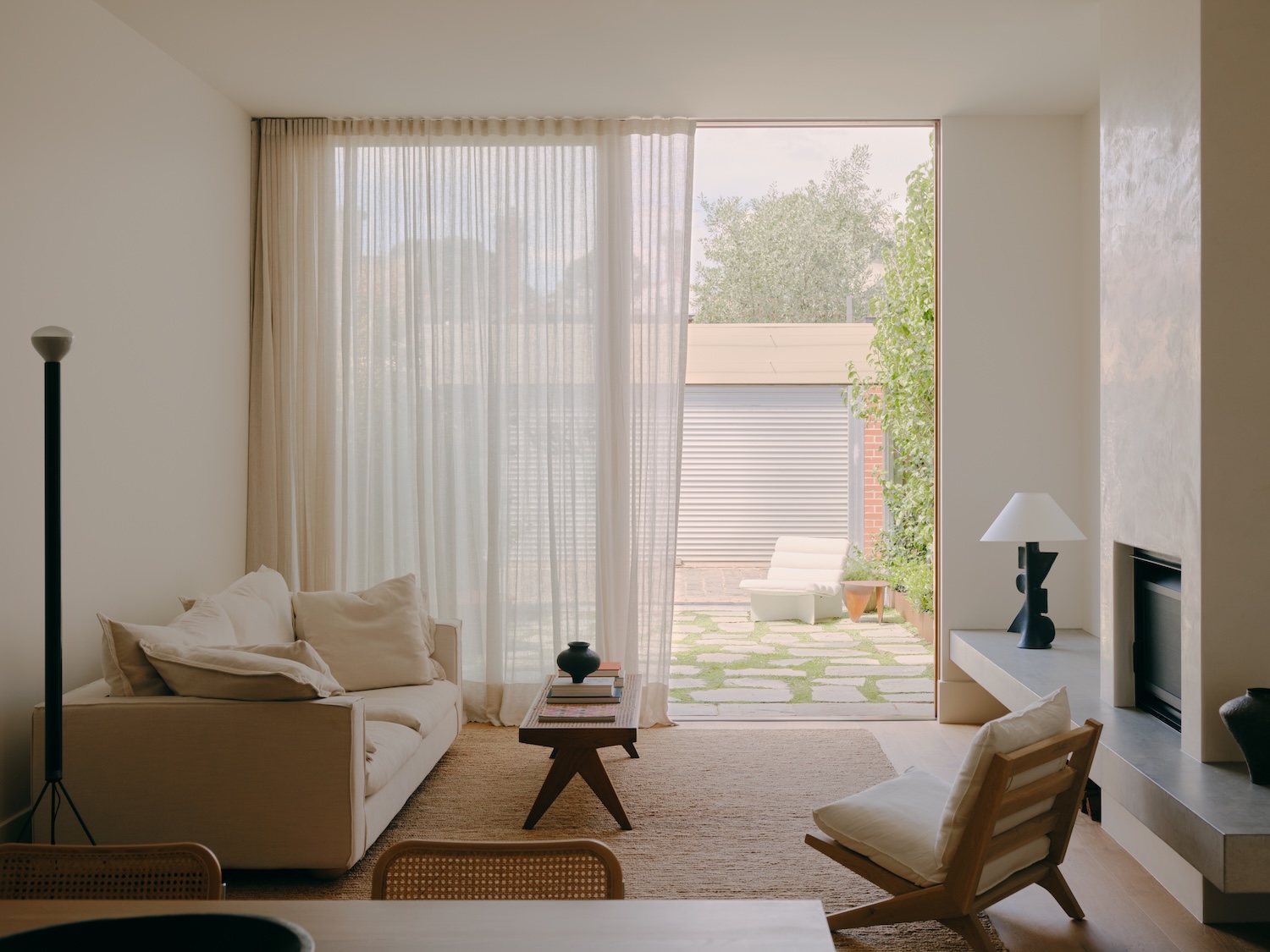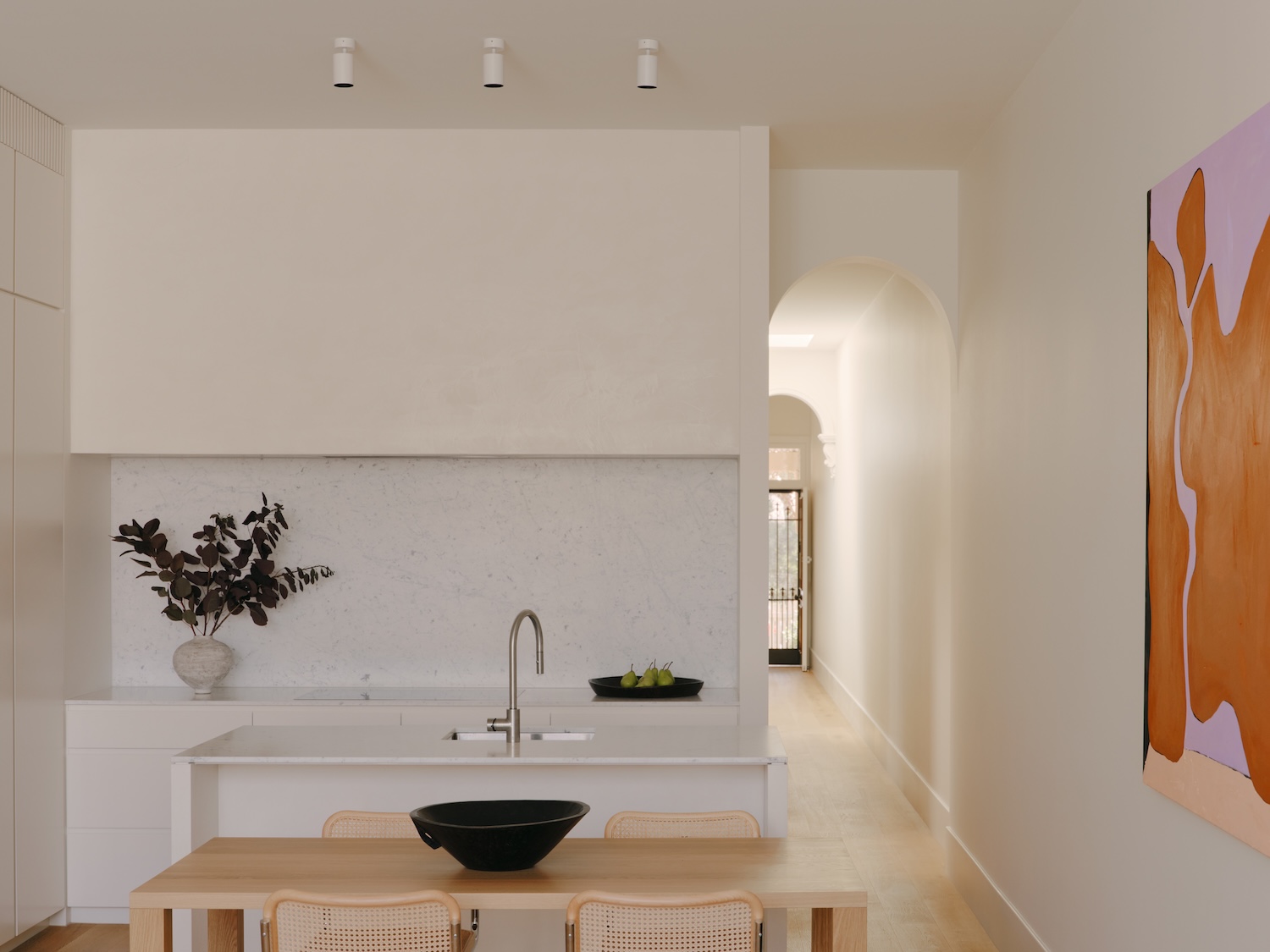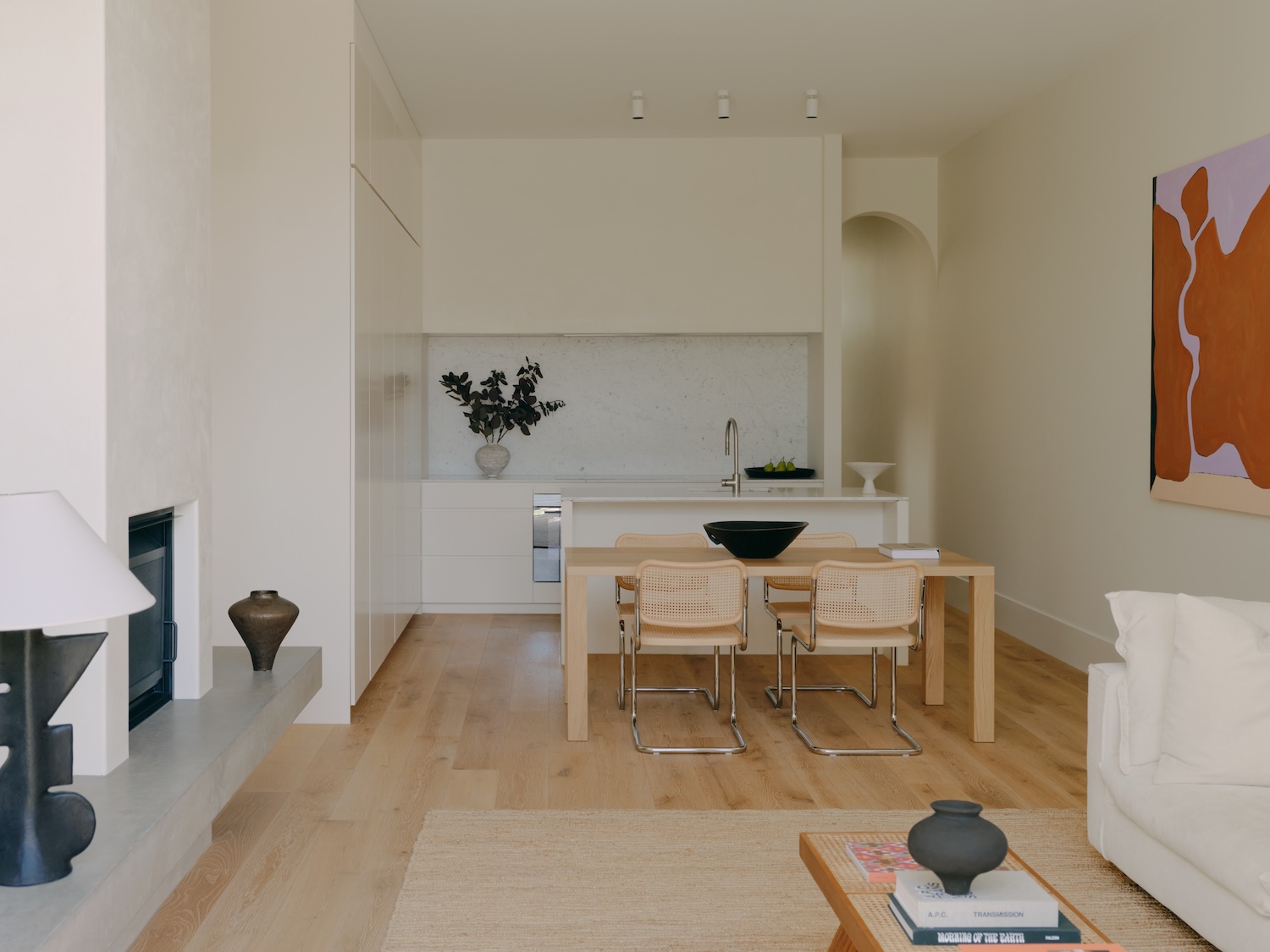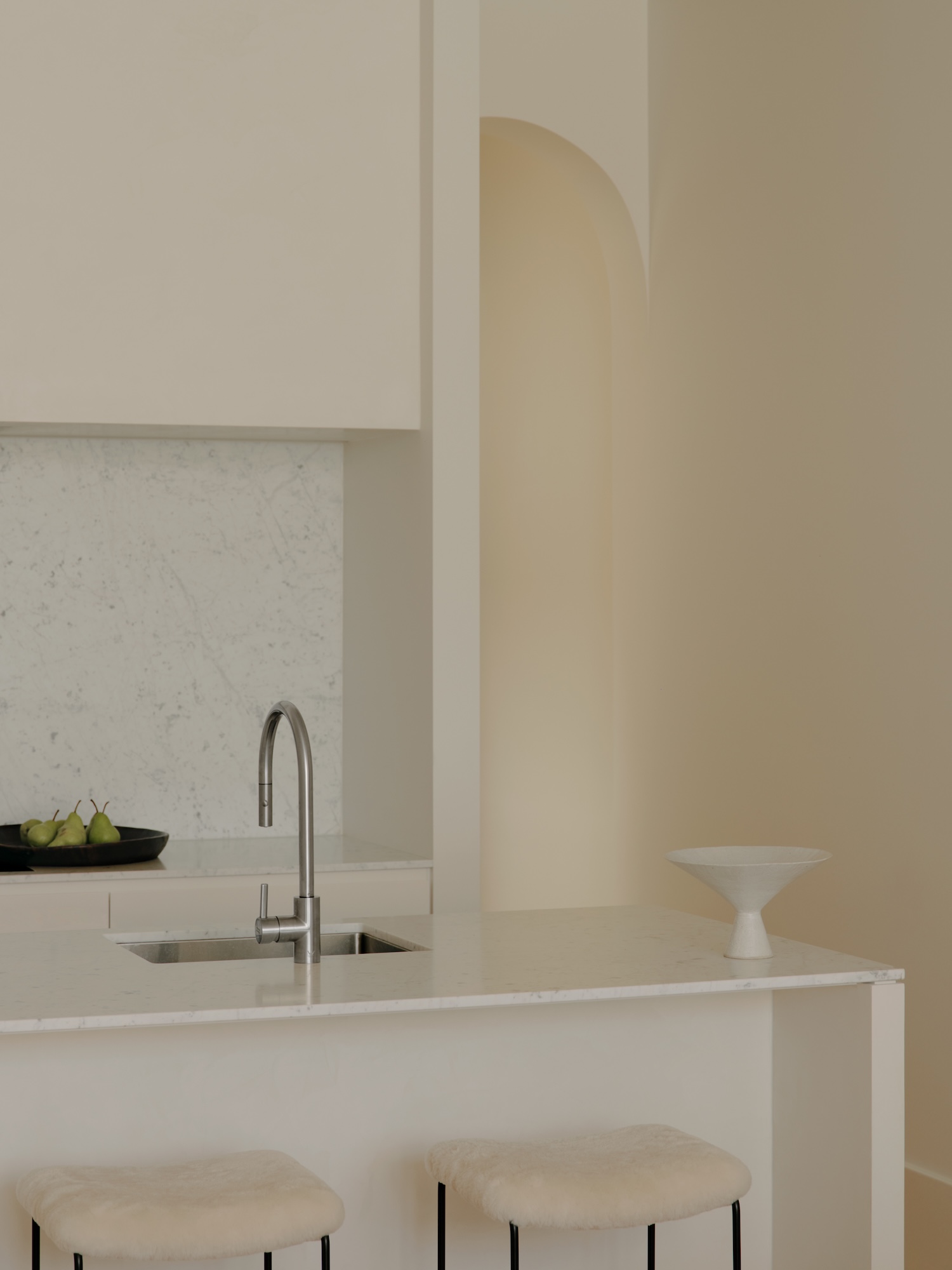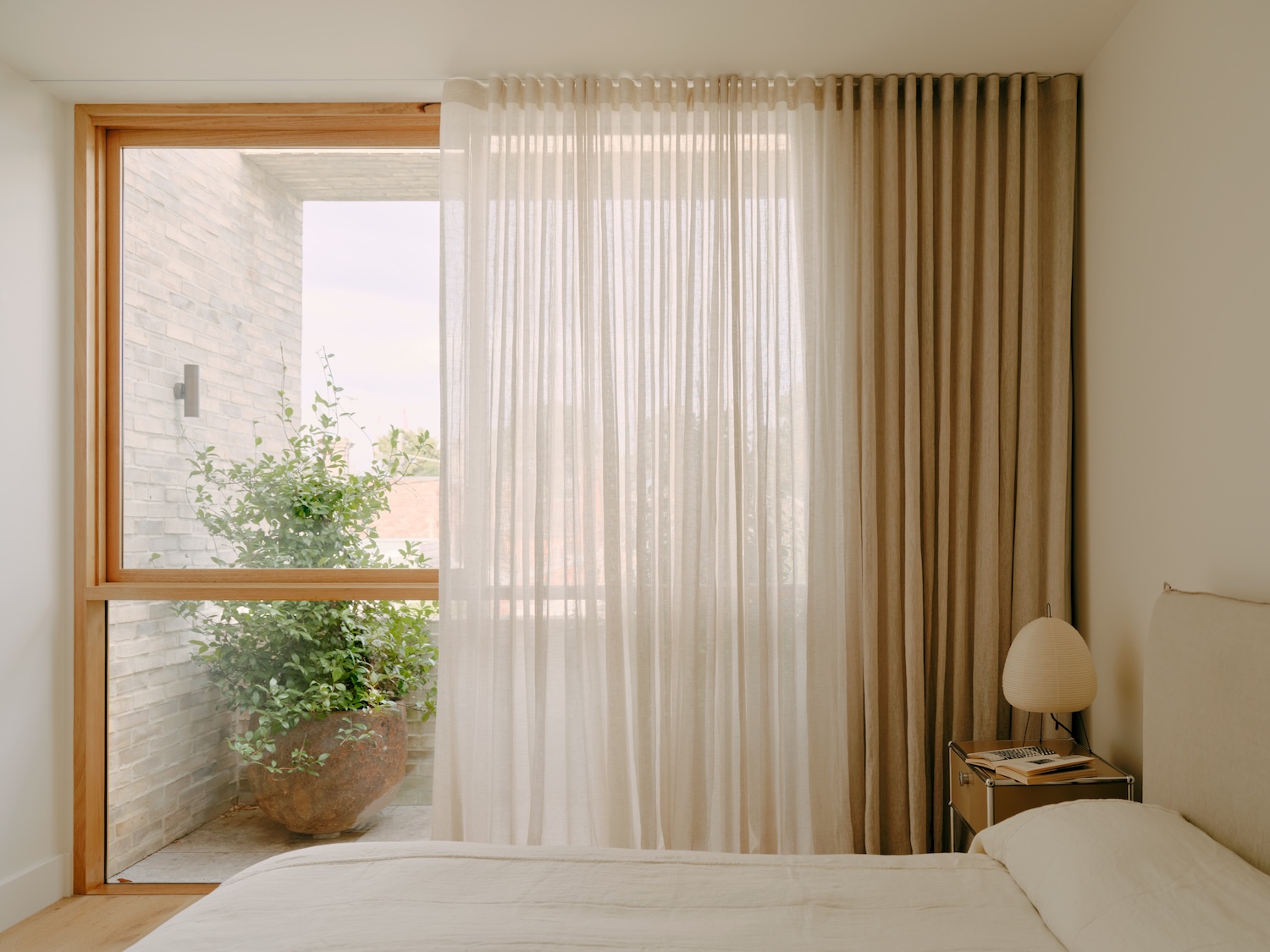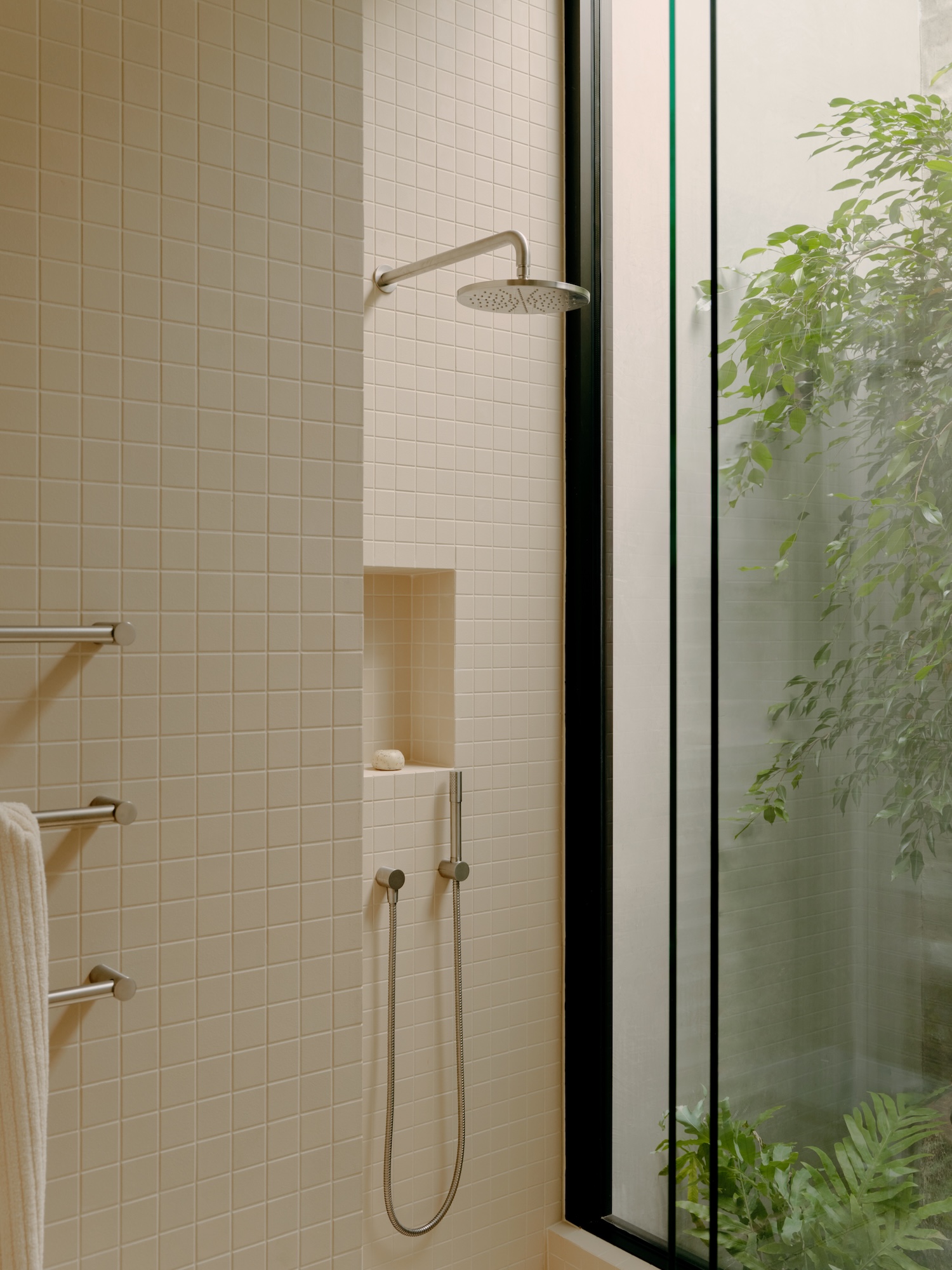Fitzroy North Residence is a minimal house located in Fitzroy North, Australia, designed by Alessia Ferrarini. In the corner of a narrow Melbourne terrace, a fragment of original lime plaster clings to weathered brick, its surface mapping decades of domestic life through hairline cracks and gentle undulations. This small remnant, preserved deliberately within Alessia Ferrarini’s thoughtful restoration of her Fitzroy North home, speaks to something fundamental about contemporary design practice – the delicate negotiation between preservation and transformation that defines our moment.
Ferrarini’s approach to this heritage-listed terrace reveals the sophisticated material thinking that characterizes the most compelling residential work today. Rather than treating the existing structure as mere constraint, she and partner Ben Crowe, working with Cera Stribley Architects, developed a strategy that reads the building’s material DNA and responds with contemporary interventions that feel inevitable rather than imposed. The lighter brick cladding of the rear extension doesn’t mimic the original masonry but establishes a tonal conversation – a subtle shift that acknowledges heritage while asserting its own time.
The project’s true innovation lies in its understanding of domestic rhythm and the way materials can support family life. Ferrarini’s selection of Bianco Carrara marble and Classic Travertine for the kitchen and living areas demonstrates an intuitive grasp of how natural stone’s thermal mass and visual weight can anchor open-plan spaces that might otherwise feel restless. “With young children, most of our time at home is spent in the kitchen, living room, and garden,” she explains, and her material choices reflect this reality – surfaces that can withstand the beautiful chaos of family life while maintaining their dignity.
The Mediterranean influence in Ferrarini’s palette connects to broader currents in contemporary Australian design, where European sensibilities increasingly inform approaches to light, texture, and spatial flow. Her use of Venetian plaster and exposed concrete speaks to a material honesty that has roots in both Italian modernism and Australia’s own evolving relationship with craft and making. The dining table becomes a focal point where these influences converge – a place where daily life unfolds against the backdrop of carefully considered materials.
